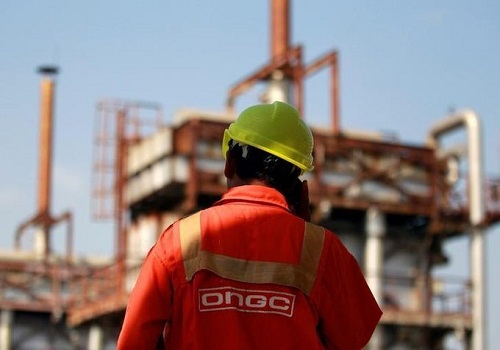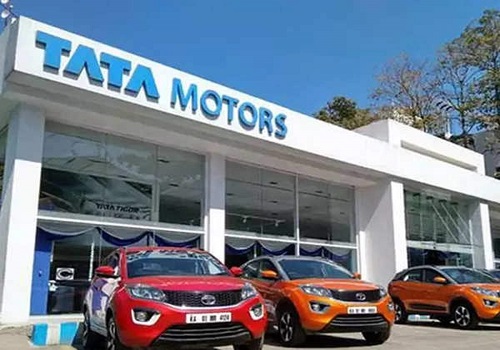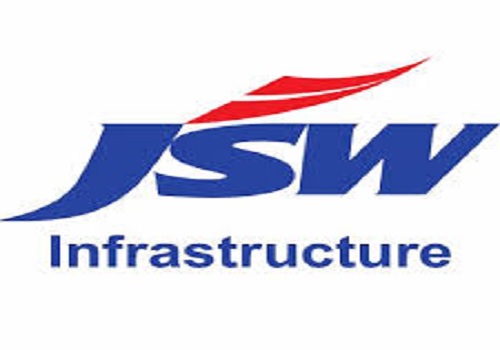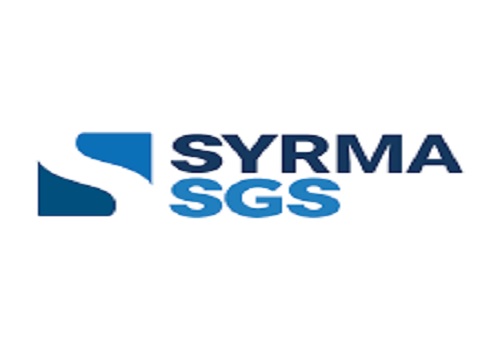Neutral Tata Motors Ltd For Target Rs.955 By Motilal Oswal Financial Services
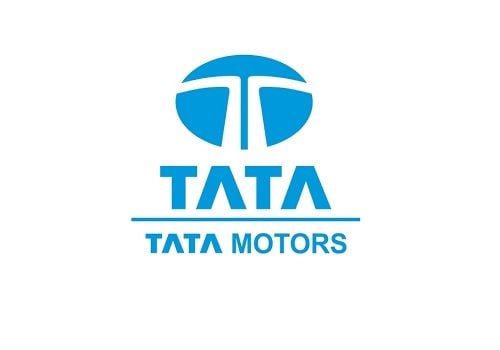
Follow us Now on Telegram ! Get daily 10 - 12 important updates on Business, Finance and Investment. Join our Telegram Channel
Well placed to capitalize on emerging trends
Aims to outperform across segments in India business
TTMT’s India Investor Day 2024 highlighted the clear targets that it has set out for individual business segments, which include: 1) CV business: target for FCF of 6-8% of revenue, resulting in strong ROCE, by growing ahead of the industry and achieving strong double digit EBITDA margin 2) PV ICE business: positive and growing cash flows by improving market share to 16% by FY27 and target for double digit EBITDA margin 3) EV business: achieve EBITDA break-even by FY26. While TTMT’s India business has already become net debt free in FY24, it has set a target for JLR to become net debt free by FY25. Now, TTMT’s individual businesses are self-sustaining and investment spending is well funded. While there is no doubt that TTMT has delivered an extremely robust performance across its key segments in FY24, there are clear headwinds ahead that could hurt its performance, especially at JLR. The stock trades at 17x/14.6x FY25E/FY26E consolidated EPS and 5.9x/4.9x EV/EBITDA. Reiterate Neutral with our FY26E SOTPbased TP of INR955.
Key takeaways are as follows:
* Update on Demerger process: The demerger of CV and PV businesses into separate entities is a logical progression, as per management, given- i) Both CV and PV businesses have grown sizably in past few years and can now stand on their own feet, ii) Limited synergies exist between the CV and PV businesses. However, significant synergies can be leveraged across PVs, EVs, and JLR in the realms of EV technology, autonomous vehicles, and vehicle software, iii) Demerger shall further empower the respective business to pursue respective synergies, iv) lead to superior experience for customers and enhanced value for shareholder. NCLT scheme to be placed before the board for approval. Post board approval, up to 12 months to complete necessary shareholder, creditor and regulatory approval.
TTMT aims to outperform underlying industry growth across segments
* Commercial Vehicle (CV) business: It aims to- i) gradually increase market share especially in SCVs along with market leading revenue growth, ii) strong double-digit EBITDA margin iii) focus on reducing business volatility by ramping up non-vehicle business and iv) target for FCF of 6-8% of revenue, resulting in strong ROCE.
* Passenger Vehicle (PV) business: It aims for- i) volume growth well ahead of the market and achieve market share of 16% by FY27 and 18-20% by FY30, from 14% in FY24, ii) double digit EBITDA margin and iii) positive and growing cash flows.
* EV business: It aims to- i) maintain leadership in EVs and achieve over 30% EV mix of its PV volumes by FY30, ii) achieve EBITDA breakeven by FY26
CVs – Focus to improve market share and target double digit margin
* Replacement and scrappage could be the demand drivers: The domestic CV industry is expected to maintain its long-term growth trajectory. The industry has fully absorbed the impact of previous disruptions and changes. TTMT believes replacement demand and scrappage should be the next demand drivers for the industry, along with the strong infrastructure push by the government.
* Scope for better profitability: i) Domestic CV – The company is progressing toward profitable growth, with 60-70% of its products featuring new content that offers opportunities for optimization. There is also room to revisit and reduce its fixed costs. Over the past 3-4 years, the company has successfully reduced headcount by 10%. ii) EVs – There is potential to enhance profitability as battery prices continue to decrease.
* Higher focus on non-vehicle business: The non-vehicle segment currently contributes to the early to mid-teens percentage of the overall CV business revenue of ~INR790b. In the medium term, the goal is to increase this contribution to 19%. On a global scale, CV OEMs tend to achieve higher profitability in downstream business operations.
* CNG penetration to increase: Three years ago, CNG adoption increased, but then it suddenly declined as the price of CNG rose. However, it is still lower than diesel prices. If CNG comes under the GST regime, diesel and petrol will also be included. TTMT believes that the government will maintain the price difference between diesel, petrol, and CNG.
* Spending on alternative fuels: About 30-35% of TTMT’s capex is dedicated to alternative fuels. This year, it will increase to 45-50% as the company aims to introduce these technologies in a robust manner, ensuring they are viable for customers. It is already investing in LPG and seeing a huge scope, comparing with China where penetration of LNG was ~30% last year.
* Increasing preference for EVs: Previously, there was a trend of shifting from 3W CVs to 4W CVs. With the transition to BS6, the cost of diesel 4Ws has increased. In the BS6 era, 3Ws are becoming more attractive again, particularly e-3Ws rather than ICE 3Ws. The e4W segment has also become appealing due to a better total cost of ownership (TCO), as they offer greater flexibility to handle higher volumes and loads.
* Feedback on Ace EV: There have been no complaints about the product, with range anxiety being the only concern. Even when overloaded, the efficiency remains unaffected. Additionally, about 40% of customers are retail buyers.
* TML Smart Mobility market share: TML has a cumulative market share of 34% and a standalone market share of 51% in FY24.
* Capacity: TTMT does not expect capacity issues for at least the next two years. Jamshedpur facility, primarily for heavy-duty trucks, operates at over 80% utilization. If additional capacity is needed, it can be supplemented by the Lucknow and Pune facilities. The SCV segment is operating at 50-60% utilization. For buses, there are no issues with chassis production and for bus body, there were issues with bus body builders, prompting an increase in capacity. Now, the company is well-positioned to meet demand.
PVs - Aims to achieve market share of 18-20% by FY30
* Aims to expand its addressable market: TTMT expects the Indian PV industry to reach 6m units by FY30, translating into a 6-7% CAGR. The current addressable market for TTMT is just 53%, with a 26% market share in its addressable markets. TTMT aims to expand its addressable market to 80% of the TIV with new model launches. The introduction of the Curvv and Sierra will help capture the mid-SUV segment. The company strives to achieve over 25% market share across its entire addressable market.
* Targets 18-20% market share in PV industry over next 5-6 years: TTMT’s market share in the PV industry stood at 14% in FY24. It aims to take it to 16% by FY27 (led by introduction of Curvv and Sierra) and 18-20% by FY30 (led by introduction of new nameplates), further supported by powertrain shift toward EVs and CNG.
* TTMT expanded its capacity by operationalizing the Sanand-2 facility.
* The factory was retooled in 12 months and began production in Jan’24. It is currently producing 6-7 units per month, with an expected increase to 13-14k units soon.
* The Sanand-2 facility provides an annual capacity of 300k units, expandable to 420k units, bringing our overall capacity to over 1m units.
* The plant features high levels of digitization and automation, enabling advanced manufacturing for both current and upcoming models. It will leverage synergies with its adjacent facility and the nearby vendor park.
* Salience of emission-friendly powertrains (i.e., CNG & EVs) to increase substantially: The share of EV/CNG in overall industry volume is expected to increase to 20%/25% by FY30 from 2%/15% in FY24. On the other hand, the share of petrol-based fuel/diesel is expected to decline to 50%/5% by FY30 from 65%/18% in FY24.
* Penetration for alternate fuel has increased for TTMT: The penetration of CNG and EV for TTMT has increased from 8%/9% in FY23 to 16%/13% in FY24. It will capitalize on the powertrain shifts in the industry. TTMT’s market share for EV and CNG stood at 73% and 23%, respectively.
* TTMT has guided for capex of 6-8% of revenue and will maintain it for the next 4-5 years, with most of it going toward EVs. It cumulatively plans to invest INR160-180b in EVs in the next six years.
* Increase in first-time buyers led by Tiago EV and Punch EV: Upon its launch, Tiago received 10k bookings on the first day, with first-time buyers constituting 18-20% of the customer base. Tiago also attracted a significant number of second-time buyers. Punch, priced under INR1.5m, offers a higher range and is positioned as a comprehensive household vehicle. Women buyers account for 22% of purchases, compared to 11% for ICE cars.
* Increase per-charge range: The first Nexon had a range of 220km, which has now been improved to 320km. The company aims to achieve a range of 400km, still below the 600km range seen in EVs in the US.
Electrification- Moving toward achieving self-reliance
* EV business target: It endeavors to- i) maintain leadership in EVs and achieve over 30% EV mix of its overall PV volumes by FY30, ii) achieve EBITDA breakeven by FY26
* Charging infrastructure: TTMT’s charging network has recently doubled in size. The majority of its expansion efforts are focused on reinforcing existing infrastructure with additional chargers. In new locations, it ensures the capacity to charge 6-7 cars simultaneously. Some states have introduced EV-friendly policies, which will facilitate its initiatives.
* Agratas: Originally it had planned to launch in India by 2024, but the timeline has been delayed. However, the current circumstances present an opportunity as raw material costs are lower and the global EV market is subdued. Therefore, it may consider starting the project by 2026.
* Batter landscape: The battery RM landscape is currently dominated by China, accounting for ~70% of production. However, India faces a challenge in sourcing critical components such as cathode and anode materials domestically. Cathode manufacturing, in particular, presents a significant opportunity, and Tata Group is keen to explore this avenue.
* It is focusing on producing lithium iron phosphate (LFP) cathodes to cater to the expanding LFP market. Despite the proliferation of battery companies, there is a scarcity of cathode manufacturers, exacerbated by limited raw material sources. Coupled with weak demand for EVs, this has led to a sharp decline in raw material prices. It is anticipated that raw material costs will continue to decrease in the near to mid-term.
* Auto components: TTMT has made significant progress in achieving selfsufficiency in its sourcing. Apart from cells and semiconductors, its supply chain is fully localized. By FY25, it aims to design cells in-house. Its drive train integrates motor, inverter, and reducer functionalities into a single unit. It is finalizing agreements for inverters, excluding software. It is also developing electric compressors with 50% localization and home chargers with Tata Tech. TCS is aiding in the development of fast chargers, expected by Nov’24. With its JV, TTMT is advancing in battery packs and motor production, establishing selfreliance in EVs.
Valuation & view
* We expect JLR margins to remain stable over FY24-26, given: 1) rising cost pressure as it invests in demand generation, 2) normalizing mix, and 3) EV rampup, which is likely to be margin-dilutive. Even in India business, both CV and PV businesses are seeing moderation in demand. We have factored in flat margins for India business over our forecast period.
* While there is no doubt that TTMT delivered an extremely robust performance across its key segments in FY24, the above-mentioned headwinds could hurt its performance going ahead. The stock trades at 17x/14.6x FY25E/FY26E consolidated EPS and 5.9x/4.9x EV/EBITDA. Reiterate Neutral with our FY26E SOTP-based TP of INR955.
For More Motilal Oswal Securities Ltd Disclaimer http://www.motilaloswal.com/MOSLdisclaimer/disclaimer.html
SEBI Registration number is INH000000412







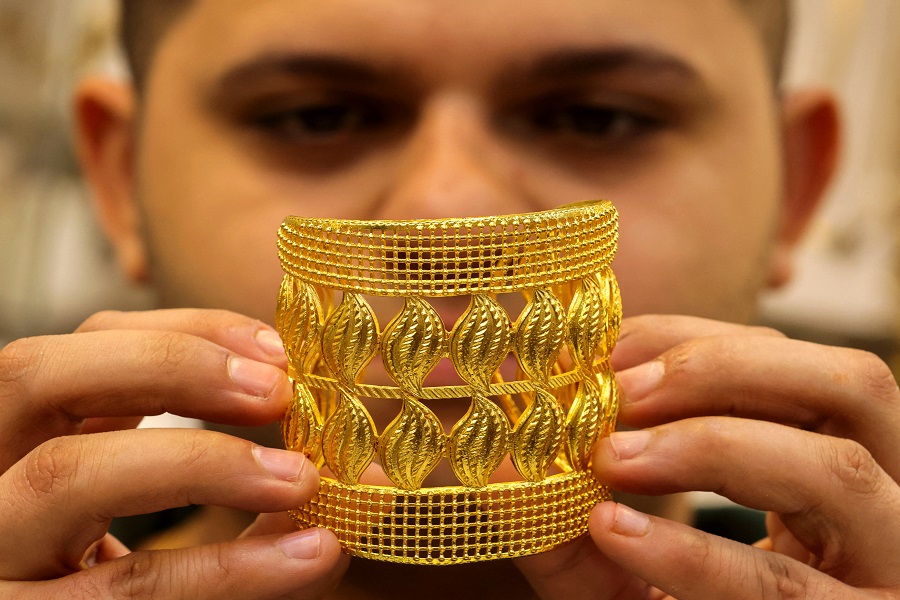




 320-x-100_uti_gold.jpg" alt="Advertisement">
320-x-100_uti_gold.jpg" alt="Advertisement">

